a_namenko/iStock/GettyImages
Like the classic school science project, the vinegar and baking soda volcano, orange juice mixed with baking soda causes a fizzy, foamy reaction. This instant scientific reaction occurs when the citric acid from orange juice affects the chemicals in baking soda, creating carbon dioxide. It's the carbon dioxide that causes the fizz or bubbles. Carbon dioxide is the same ingredient that makes carbonated beverages such as soda and sparkling water fizzy.
Baking Soda 101
Baking soda is a highly alkaline substance derived from trona ore, most of which is mined in the Green River Basin in Wyoming. When baking soda interacts with an acidic substance, it creates sodium carbonate and carbon dioxide. Carbon dioxide bubbles give lift to cookies, cakes and other baked goods. If a baked good doesn't contain an acidic ingredient, the baking soda may not dissolve completely. Baked goods may be flat and have a bitter taste. You may even notice bits of undissolved baking soda in the baked good.
Acidic Ingredients
Vinegar combined with baking soda makes for spectacular science experiments in elementary school, but it's not the only acid capable of making baking soda fizz. In baked goods, buttermilk, molasses, brown sugar and even most fruit juices and purees interact with baking soda. Orange juice is more acidic than most fruit juices and can certainly cause a reaction.
Baking With Orange Juice
Mixing orange juice with baking soda probably won't have the explosive power of vinegar and baking soda, but it can still make a mess. Bypass this problem by changing your method of mixing. If you're making orange cookies or an orange cake, blend the orange juice with the other wet ingredients, such as the butter, eggs or oil. Sift the baking soda into the flour. The baking soda and orange juice will meet only after they've been mixed into a batter. The batter contains the bubbles and eliminates any mess.
Tips for Using Baking Soda
Baking soda needs both an acidic ingredient and heat to work properly, which is why it's important to get baked goods into the oven fairly quickly. If you put baking soda in a glass of orange juice and left it on the counter, the bubbles would dissipate quickly and the orange juice would return to normal. Another reason baking soda sometimes doesn't work is because it's old. Keep baking soda in a dry, cool location and replace it at least once each year.
Related Articles

Does Cream of Tartar Contain Dairy?

How to Make a White Decorator Icing

Ingredients to Counteract the Bitter ...

How to Substitute Cocoa Powder for ...

How to Bleach a White Dress Shirt

How to Replace Eggs With Mayonnaise
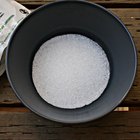
How to Make Xylitol Toothpaste

Can You Substitute Applesauce for Eggs ...

How to Tell When Orange Juice Has ...

How to make Orange Extract

How to Prepare French Toast in Advance
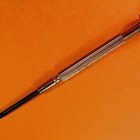
How to Change a Fossil Watch Battery

What Works With Baking Soda Besides ...

How Long After a Sell-By Date Can You ...

What Are the Functions of Cream of ...

How to Make Tank Tops Out of T-Shirts
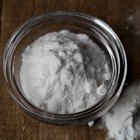
Substitution for Double-Action Baking ...

How to Make a Fruit Reduction
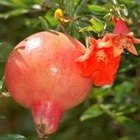
How to Get Out Pomegranate Juice Stains
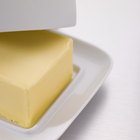
Butter Substitute for Molten Lava Cake
References
Writer Bio
Julie Christensen is a food writer, caterer, and mom-chef. She's the creator of MarmaladeMom.org, dedicated to family fun and delicious food, and released a book titled "More Than Pot Roast: Fast, Fresh Slow Cooker Recipes."